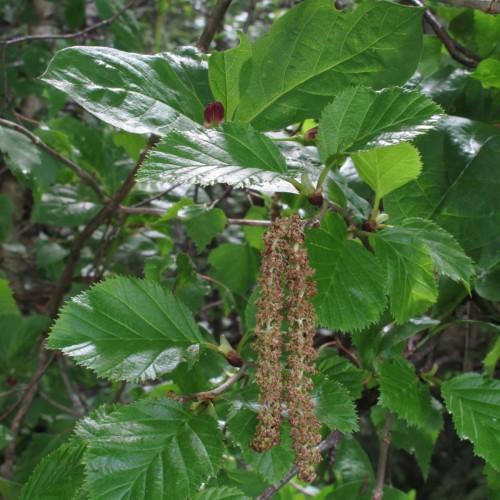
Sitka Alder
Alnus alnobetula subsp. sinuata
Watering:
Average
Hardiness Zone:
2
Flowers:
Flowers In Spring
Sun:
Sun, Partial Shade
Soil:
Clay, Sand, Loam
Cones:
Yes
Leaf:
Yes
Growth Rate:
Low
Drought Tolerant:
Yes
Salt Tolerant:
Yes
Invasive:
Yes
watering
Watering a Green Alder is typically done on a weekly basis, depending on the plant’s soil environment. During hot summer months, the soil should be monitored and soil moisture should be checked regularly. Although the Green Alder prefers moist soils, it can be more susceptible to fungal disease in these conditions. If soil drains quickly, watering should occur once a week with 1-2 inches (2.5-5 cm) of water. During cooler months, water less often, as the soil dries more slowly. It’s important not to overwater the plant as it can lead to root rot and other damage.
sunlight
Green Alder (Alnus alnobetula subsp. crispa) is a shade tolerant species of plant which require approximately 3-4 hours of direct sunlight a day. It is ideal to position Green Alder in an area of the garden that gets morning sun, such as an east-facing location. However, it can tolerate part-shade or semi-shade, making it a good choice for northern exposures. In areas with intense summer sunshine, a bit of shade for the plant can help protect it from heat stress so it is best to find a spot that provides morning sun and filtered sun in the afternoon.
pruning
Green Alder should be pruned in late winter or early spring while the plant is still dormant. It can be trimmed for size or shape, or to clear away damaged or dead limbs. Start by cutting out any dead or broken branches, then prune away branches that are overcrowded or weaker than the rest. Remove any suckers (vertical shoots growing from the root system), and finally trim back any upright and visible shoots. After pruning, use a sharp pair of shears to clean up the shape and make sure all cuts are made at a 45-degree angle. Prune lightly as Green Alder does not respond well to heavy pruning.
